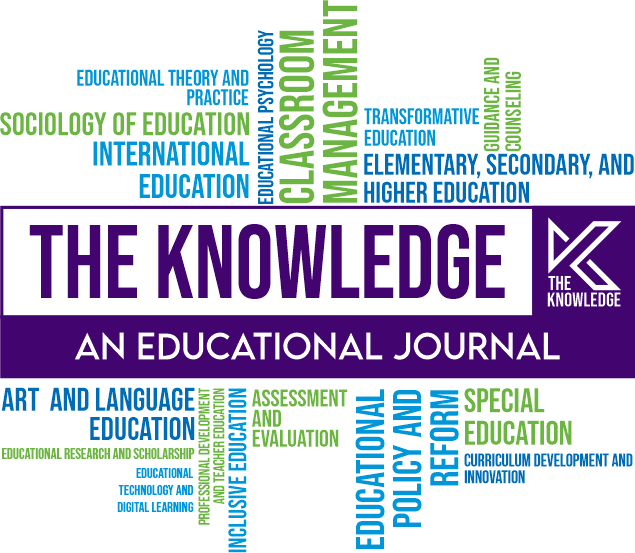Language and Covid-19 Discourse: An Analysis of Pandemic-Related Language Discourse Used on Social Media
DOI:
https://doi.org/10.63062/tk/2k24a.31014Keywords:
Twitter, Quarantine, Language Analysis, Pandemic, Public sentimentsAbstract
Covid-19 had a formidable impact on the entire world and changed the whole discourse of life. During the pandemic, social media sites, including Twitter, now played a vital role in shaping and moulding public dialogue and sentiments. This research examines the linguistic features, discursive methods, and strategies used in COVID-19-related tweets. After analyzing the tweets collected during the initial stage of the COVID-19 pandemic, the current study attempts to explain how language is used to generate meanings, transfer messages and influence public opinions and sentiments about COVID-19. The study also tries to identify various linguistic patterns, including lexical innovations, metaphors, emotive expressions, and hashtags. The current research paper also identifies diverse discursive strategies applied by multiple user groups, including health departments, journalists and individual users. The findings of the research emphasize the manifold as well as the diverse aspects of online communication during the COVID-19 pandemic. They will contribute to our understanding of how language shapes our perception and response to global events.
References
Cartier, E., Onysko, A., Esme Winter-Froemel, Zenner, E., Andersen, G., Béryl Hilberink-Schulpen, Nederstigt, U., Peterson, E., & Frank van Meurs. (2022). Linguistic repercussions of COVID-19: A corpus study on four languages. Open Linguistics, 8(1), 751–766. https://doi.org/10.1515/opli-2022-0222
Hanschmidt, F., & Anette, K. (2023). Emotions in COVID-19 Twitter Discourse Following the Introduction of Social Contact Restrictions in Central Europe. Journal of Public Health: From Theory to Practice, 31(4), 933-946. https://doi.org/10.1007/s10389-021-01613-y
Harya, D. T. (2016). Language Change and Development: Historical Linguistics. Premise: Journal of English Education, 5(1), 103-117. https://doi.org/10.24127/pj.v5i1.418
Hyeju, J., Emily, R., & David, R. (2020). Tracking COVID-19 Discourse on Twitter in North America: Topic Modeling and Aspect-Based Sentiment Analysis. Journal of Medical Internet Research, 23(2), 1-11. https://doi.org/10.2196/25431
Kacar, G. Y. (2021). The Relationship Between the Use of Social Media and Loneliness During COVID-19 Pandemic. Ata İlet Derg, 93-110. https://dergipark.org.tr/en/download/article-file/2124328
Khusnul, K., Kisyani, L., Suhartono, S., Udjang, P., & Darni, D. (2021). Lingual Expressions in the Covid-19-Related Ecolexicons in Indonesian Online-Media Coverage. Journal of Language and Linguistic Studies, 17(1), 309–326. https://doi.org/10.52462/jlls.19
Ladyanna, S. (2021). Language, Social Media and Citizens in the COVID-19 Pandemic. In Proceedings of the 2nd Annual Conference on Education and Social Science (pp. 354-356). http://dx.doi.org/10.2991/assehr.k.210525.106
Luke, S. (2017). Language Evolution, Acquisition, Adaptation and Change. Sociolinguistics - Interdisciplinary Perspectives, 17-31. https://doi.org/10.5772/67767
Maarten, J. (2011). Orthographic Neologisms: Selection Criteria and Semiautomatic Detection. Instituto de Linguística Teórica e Computacional, 1-13.
Nabila, E., & Abdulrahman. (2021). An analysis of new English words created during COVID-19. Englisia: Journal of Language, Education, and Humanities, 9(1), 19-32. https://doi.org/10.22373/ej.v9i1.9035
Osakwe, Z. T., & Cortés, Y. I. (2021). Impact of COVID-19: A Text Mining Analysis of Twitter Data in Spanish Language. Hispanic Health Care International, 19(4), 239–245. https://doi.org/10.1177/15404153211020453
Qaisar, K. (2015). Neologisms in Mohsin's the Diary of a Social Butterfly. European Academic Research, 2(11), 14824-14832.
Saban, M., & Shachar, T. (2020). Social distancing due to the COVID-19 pandemic: effects of non-urgent emergency department visits. Disaster and Emergency Medicine Journal, 16(2), 63–66. https://doi.org/10.5603/demj.a2020.0026
Shoaei, M. D., & Meisam, D. (2020). The Role of Twitter During the COVID-19 Crisis: A Systematic Literature Review. Acta Informatica Pragensia, 19(2), 154–169. https://doi.org/10.18267/j.aip.138
Thakur, N. (2023, March). Sentiment Analysis and Text Analysis of the Public Discourse on Twitter About COVID-19 and MPox. Big Data and Cognitive Computing, 7(2), 1-21. https://doi.org/10.20944/preprints202303.0453.v1
Thurlow, C. (2006). From Statistical Panic to Moral Panic: The Metadiscursive Construction and Popular Exaggeration of New Media Language in the Print Media. Journal of Computer-Mediated Communication, 11(3), 667-701. http://dx.doi.org/10.1111/j.1083-6101.2006.00031.x
Wicke, P., & Bolognesi, M. M. (2021). COVID-19 Discourse on Twitter: How the Topics, Sentiments, Subjectivity, and Figurative Frames Changed Over Time. Frontiers in Communication, 6, 1-20. https://doi.org/10.3389/fcomm.2021.651997
Youngsoo, S., Minji, K., Chaerin, I., & Sang, C. C. (2017). Selfie and Self: The Effect of Selfies on Self-Esteem and Social Sensitivity. Personality and Individual Differences, 111, 139-145. https://vcc.yonsei.ac.kr/pub/papers/Shin-Kim-Im-Chong_PersIndivDiffer17.pdf




